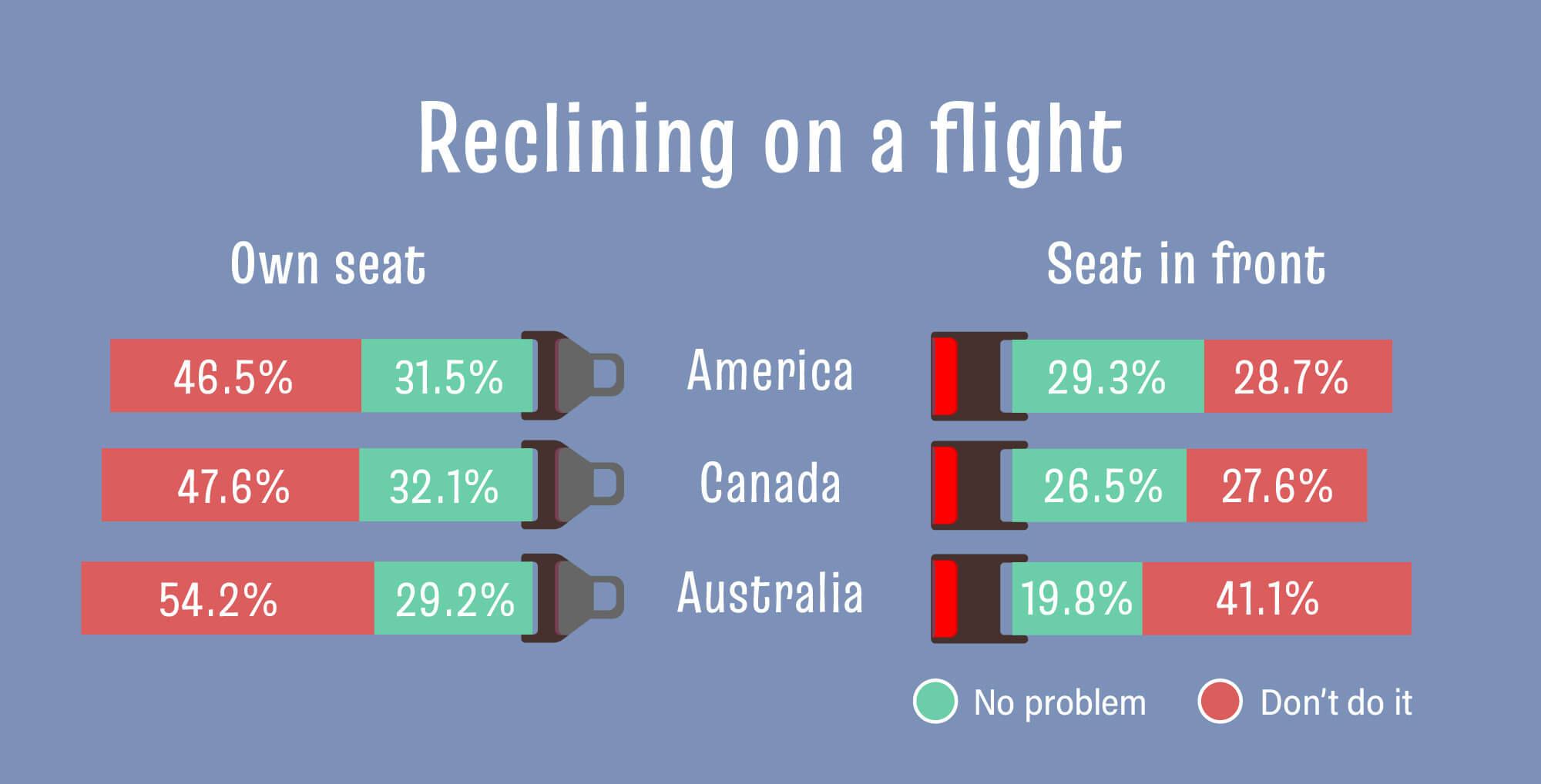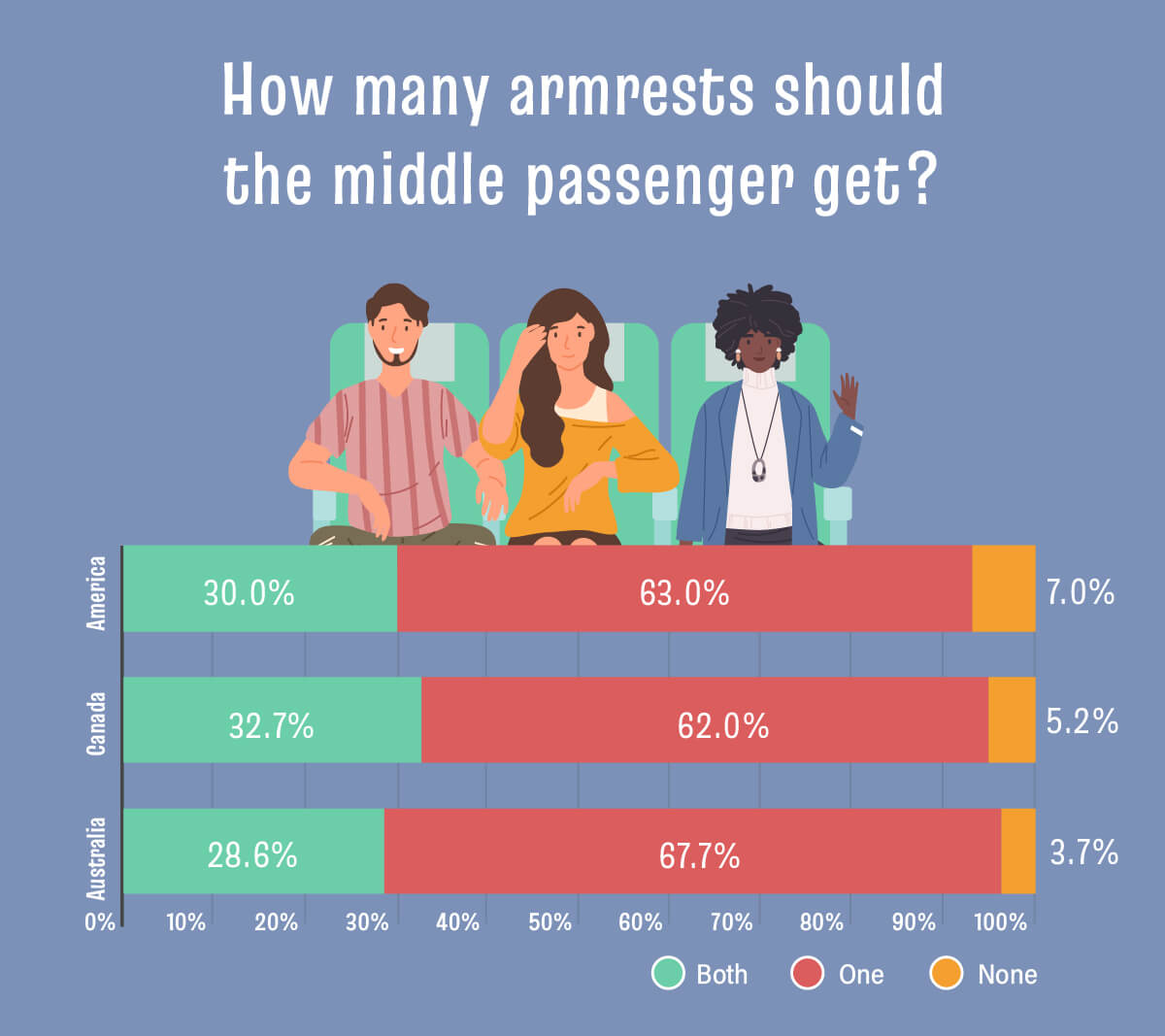The Burrow

Long-haul flights can be an awkward place, particularly when you are wedged between strangers for up to 18 hours at a time. But is it reasonable to recline the seat for some relief, or is that disrespectful to those behind you?
As experts in all things travel, we at Compare the Market know how something as simple as a reclined seat can become the topic of a heated discussion between passengers. Being in a confined space for an extended period of time can create heightened emotions, and we’ve certainly seen things get nasty.
While we strongly encourage against such behaviour, we know it can happen. With that in mind, we felt compelled to explain the ramifications of an on-board altercation. Not only can it be a disruptive start for your holiday or travel journey, but your travel insurance policy can be affected if things escalate.
For example, if you get kicked off a flight or your luggage is damaged due to an in-flight argument, don’t expect that your travel insurance policy will cover you in recuperating any costs. It’s best to remain cool, calm and collected on a flight, not just from an insurance perspective, but also to respect those around you.
In fact, a travel insurance policy typically won’t provide cover for any illegal activity, or for losses that are the result of illegal activity. To get a clear idea what other aspects of your trip you may not be covered for, you should always check your Product Disclosure Statement (PDS), which will outline any limits, exclusions and restrictions on any given policy.
Given that many an on-board debate has stemmed from trivial things such as reclining seats or arguing over armrests, the travel insurance experts at Compare the Market set out to explore people’s in-flight etiquette habits in a new survey.
The data reveals that for adults across Australia and North America, some people like to sit back and relax on flights while others tend to be more focused on the comfort of their neighbours.
Being stuck in an up-right economy seat for an extended period can be uncomfortable, even for those with the straightest of backs. But is the comfort of a few extra clicks backward worth the dirty looks from the passengers behind you? According to most people, it’s not.
In Australia, as many as 54.2% of adults claim to avoid reclining their seats to respect other passengers. It’s a little lower in Canada (47.6%) and again in the States (46.5%), albeit still a majority for each nation.
A less popular take on the debate featured those who chose to recline their seat, regardless of having someone behind them. This approach was represented by 29.2% of Australians, 31.5% of Americans and 32.1% of Canadians.
Females were more likely to avoid reclining than males in all three countries. The same goes for young adults (18-24-year-olds), of which 60% in Australia claimed to keep their seats upright.
The consensus is that most people don’t appreciate losing legroom due to the row in front reclining onto them – but it’s only a slight majority. Once again, females aged 18-24 are the most likely to expect their front neighbours to stay upright.

Perhaps the most awkward interaction while flying is approaching other passengers in your row when you need to use the bathroom – particularly when you’re in the window seat. Compare the Market found that while more than half of those who travel via aeroplanes ask others to stand and let them out, more than one-quarter of all respondents in Australia, Canada and America try to squeeze past other passengers while they are still seated. That’s a lot of uncomfortable squirming!
Of all three counties, Australians are the most likely to stay seated and hold onto their urge for fear of asking others to move, represented by 13.36% of those who travel. North Americans, in general, are a lot bolder in this regard, as only 7.31% of Canadians and 10.13% of Americans will avoid speaking to others.
Fear of asking others to move is particularly embedded in female youth aged 18-24 years.
Young Australian females are around twice as likely to hold on and avoid using the bathroom than other demographics.
It’s a similar story in Canada, although not quite as severe. The United States is the only country where young adults aren’t afraid of asking others to move and let them out of the row. On the contrary, the older generation (65+ years old) are the most likely age group to ask others to stay seated as they attempt to squeeze past their knees.
If you’re (un)lucky enough to have found yourself in the middle seat of an aeroplane, you’ll understand the confusion surrounding who gets the armrests. There are, of course, two on offer. But do they belong to the middle passenger, or are they for the travellers on either side?
Most people believe the middle passenger should get one, according to 67.7% of Australians, 63.0% of Americans and 62.1% of Canadians. Around a third of respondents in all three nations say the middle passenger deserves to have both armrests.
The United States is the most common nation in which travellers believe the middle passenger shouldn’t get any armrests while flying, compared to Canada, which is the most likely country to vote for both.
In Australia and America, 18-24-year-olds are the least likely to declare that middle passengers should have both armrests.

Compare the Market’s insurance expert, Stephen Zeller, talks to the importance of being prepared for long haul flights.
“For many people, long haul flights signal the start or end of an overseas holiday,” Mr Zeller said.
“If you want to ensure your trip gets off to a good start and ends on a positive note, it’s important to be well-prepared before your departure to ensure your trip is as comfortable as possible.
“Most airlines allow the opportunity to select your seat prior to take-off, so if you prefer to sit in a particular type of seat or location on a plane, taking advantage of this feature means you can maximise the chances of travelling comfortably.
“For the six to twelve per cent of adults that feel uncomfortable asking others to stand so they can access the bathroom, it could be a great option to select an aisle seat, for example.”
After booking flights and securing your choice of seats, it’s a good idea to organise the right sort of protection. Having an appropriate travel insurance policy means that you can be covered for a range of unexpected events, such as lost luggage, flight cancellations and costly overseas medical bills.
An easy way to sort through your options is by comparing policies, which can be done using Compare the Market’s free Travel Insurance tool.
Compare the Market commissioned Pure Profile to survey 504 Australian, 1,008 American and 1,003 Canadian adults in March 2022.